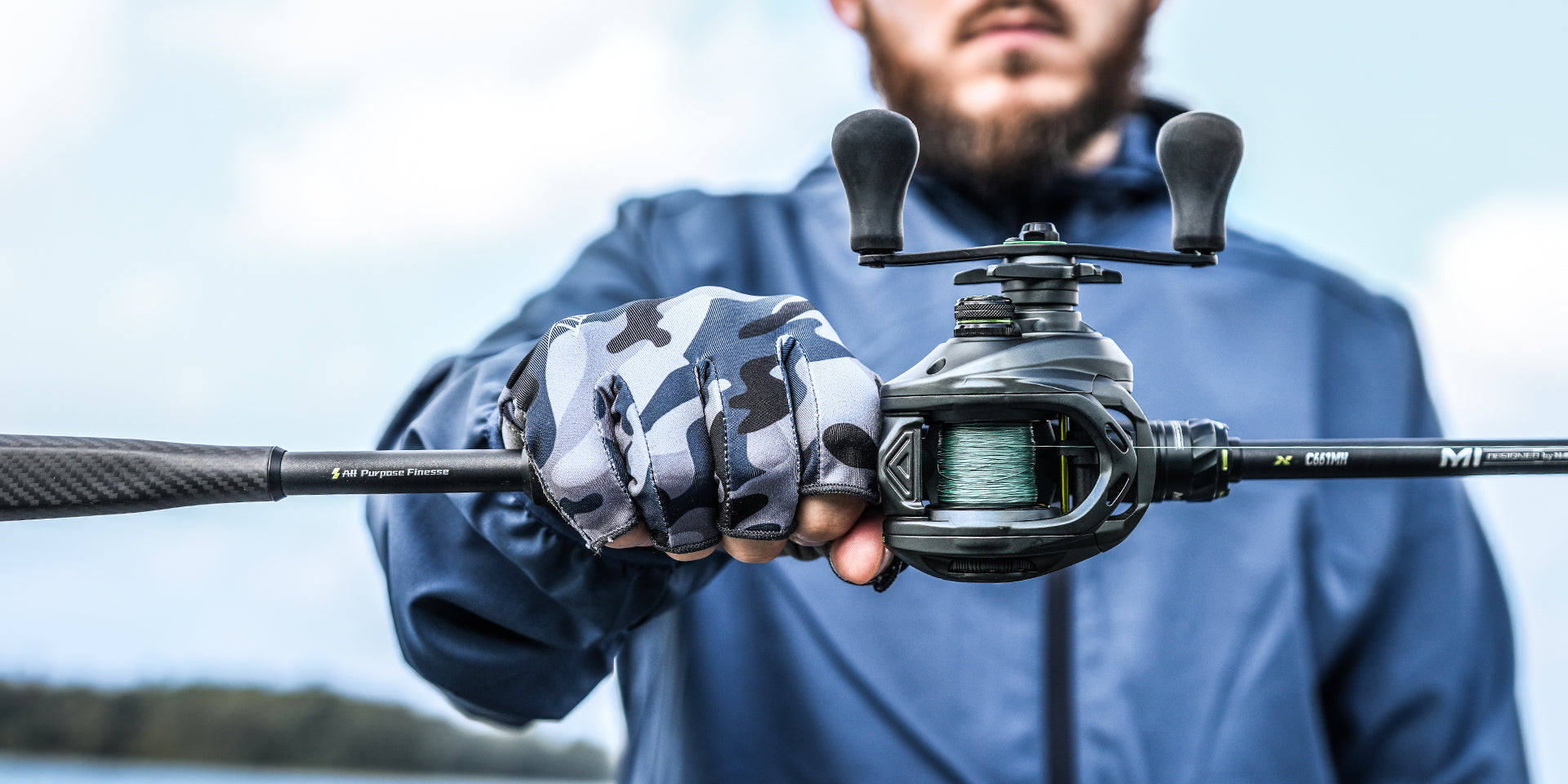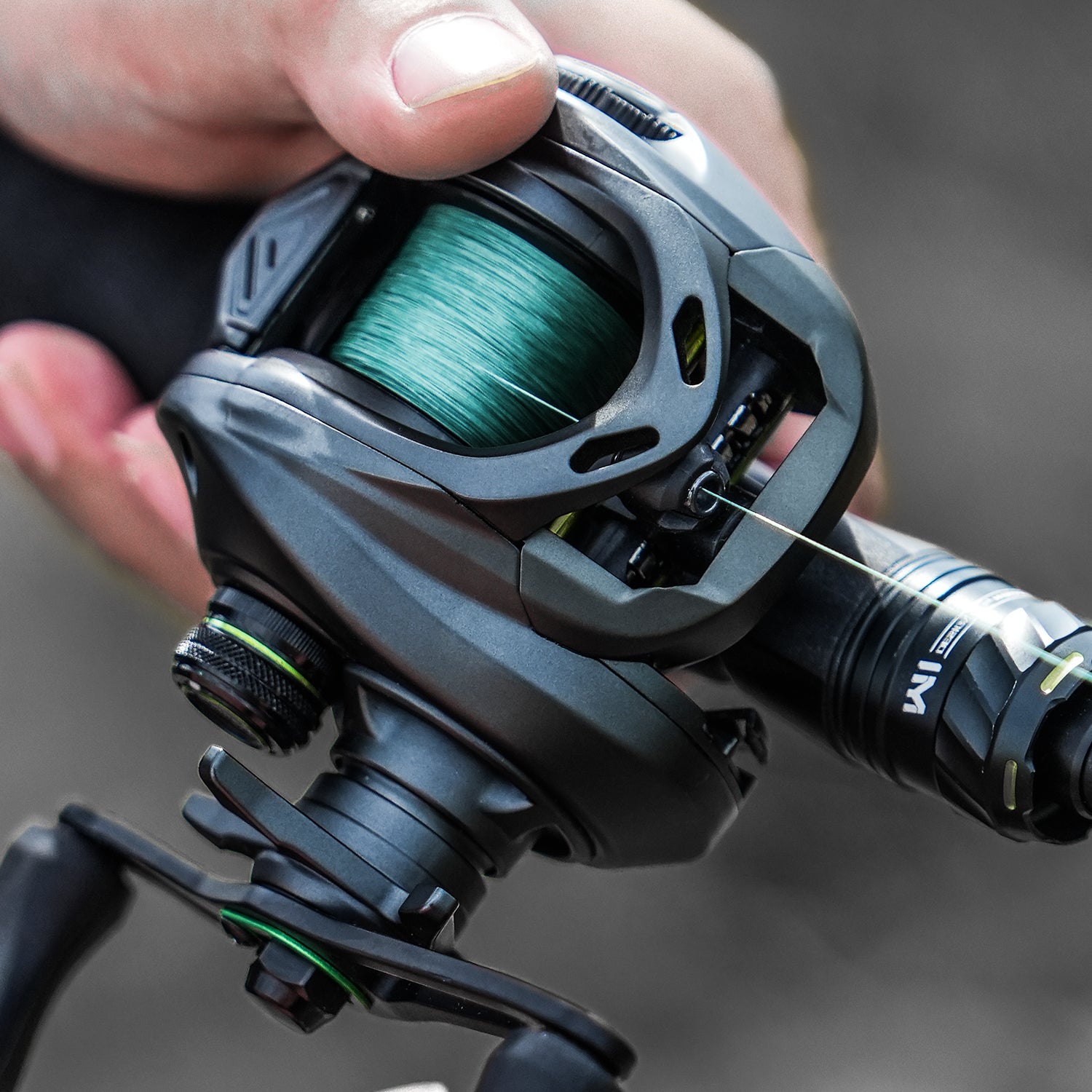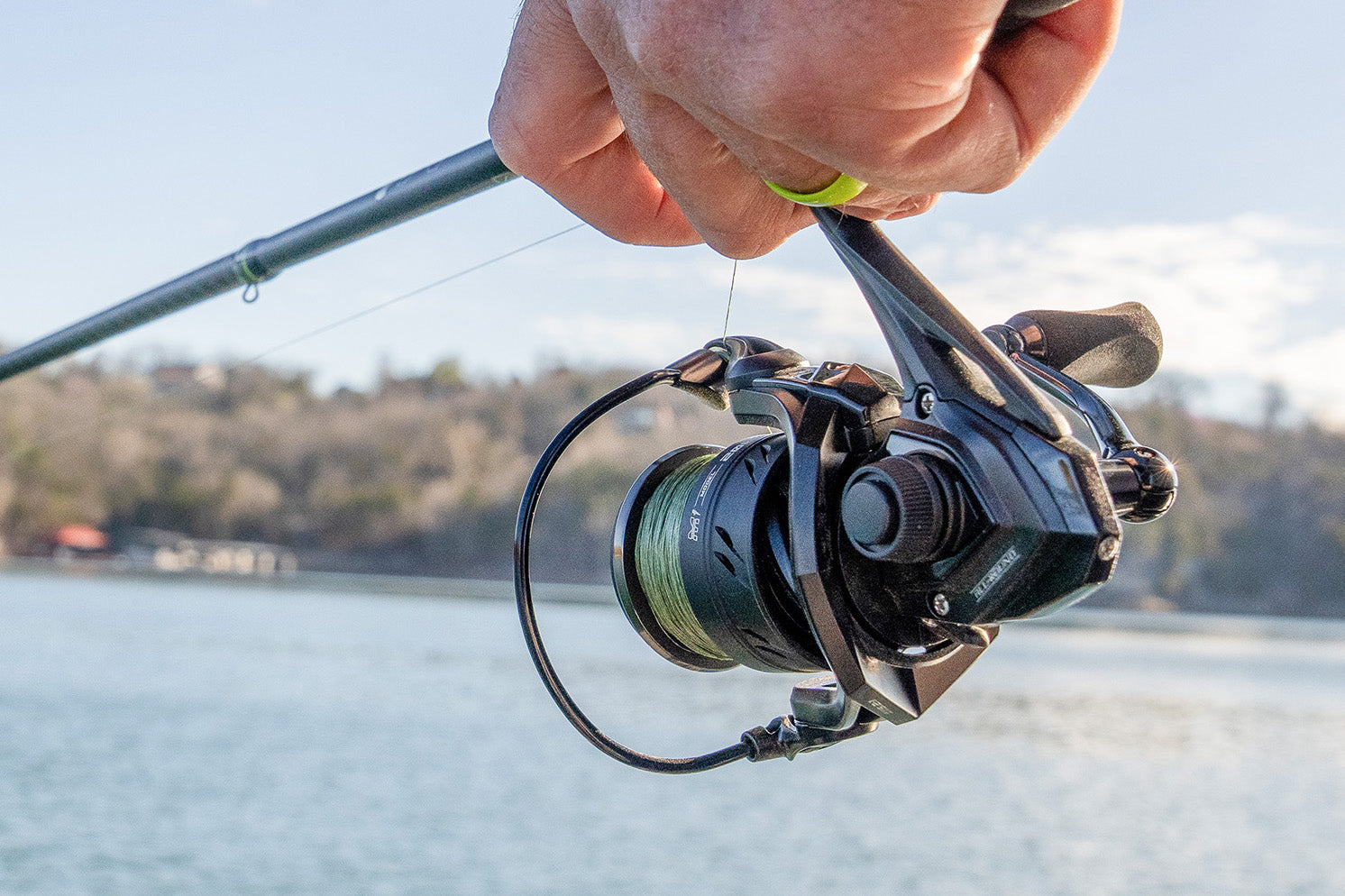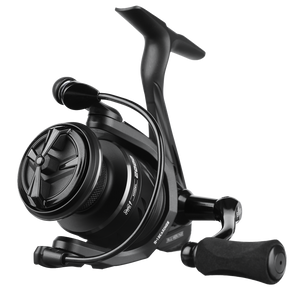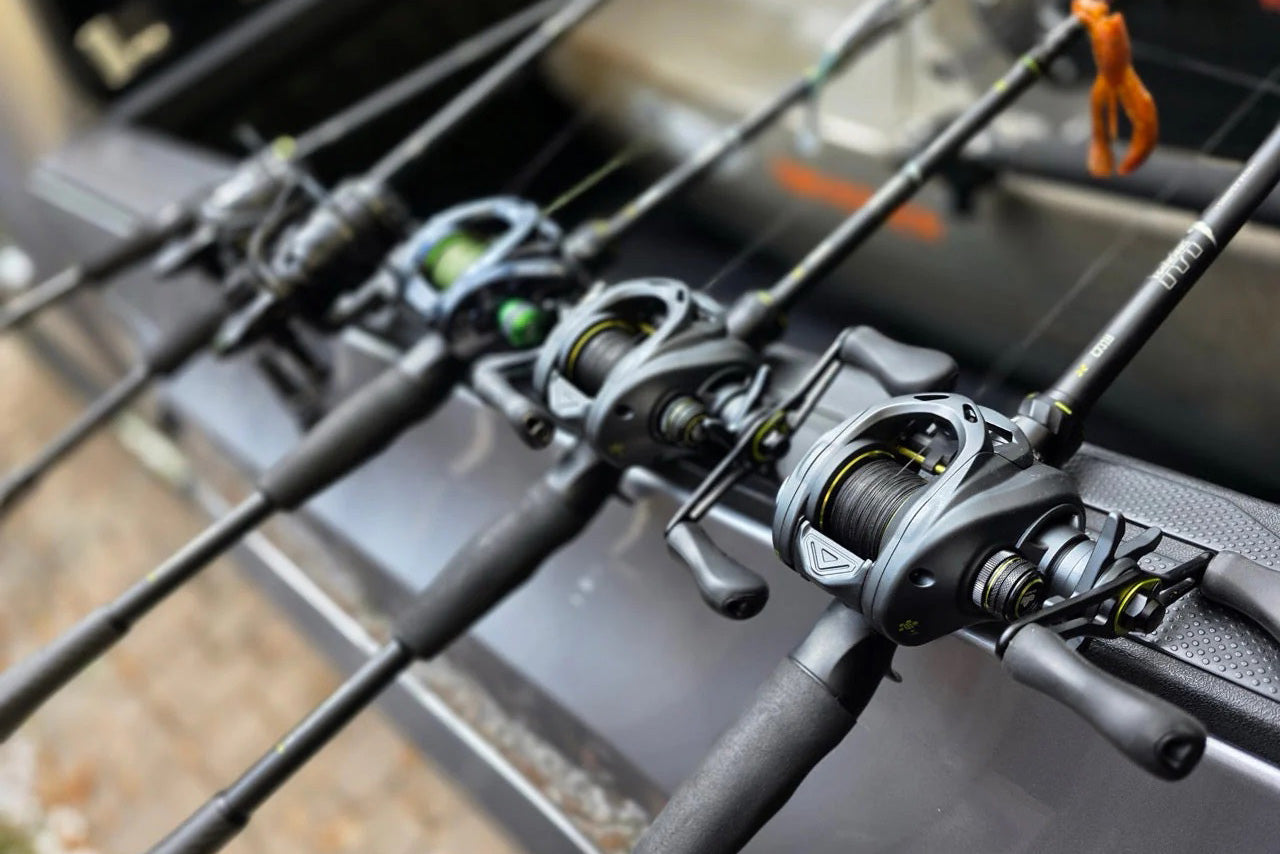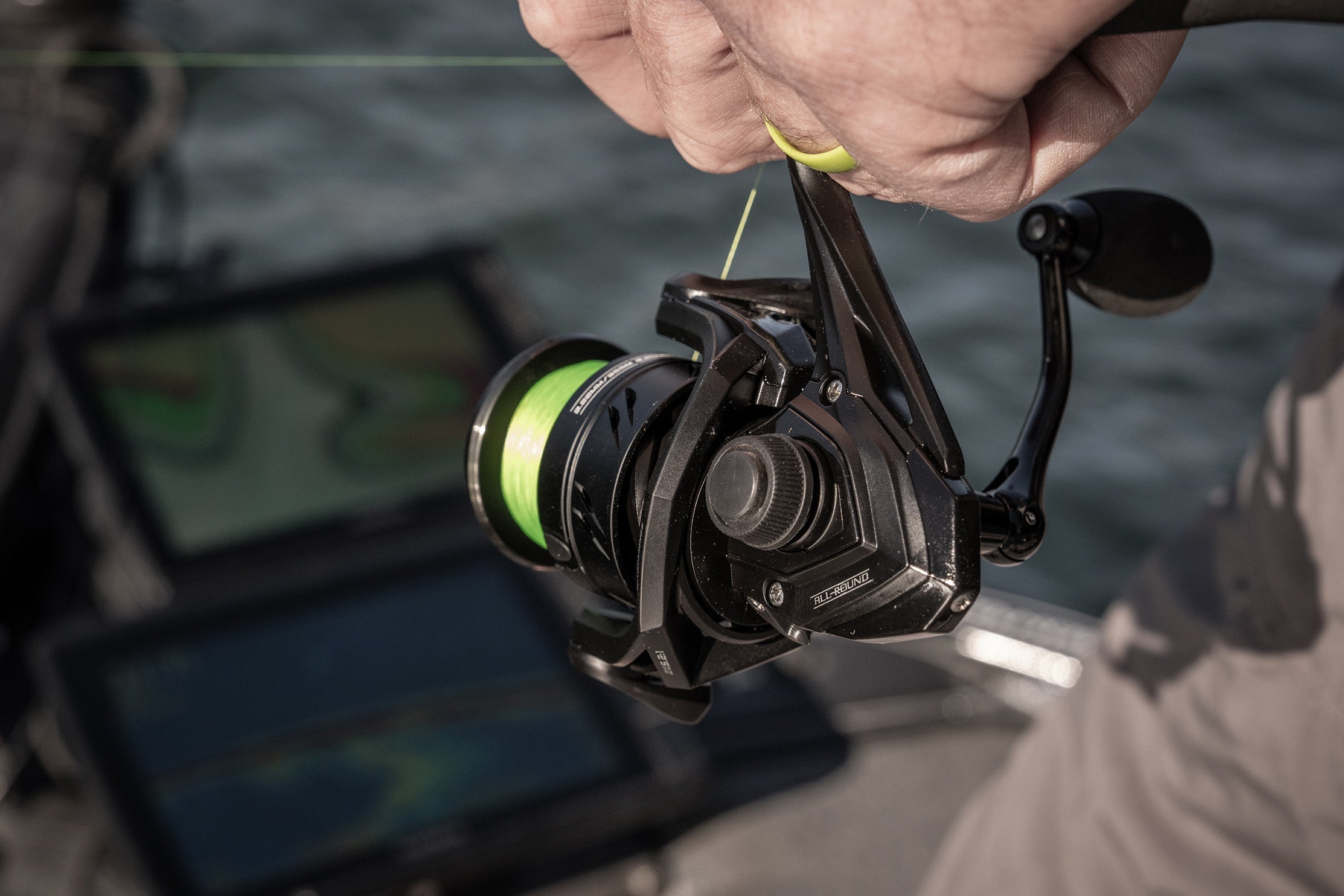Selecting the right fishing reel is the secret to a successful fishing experience. Beginners typically struggle with technical terms and contradictory information when choosing equipment. This article examines three primary options for beginners: spinning reels, spin-cast reels, and baitcasting reels—allowing you to make an informed decision that best fits your fishing goals and learning style.

Spinning Reels: The Best Choice for Beginners
Spinning reels are the sport's top recommended pick for beginner anglers new to the game of fishing. Their balanced combination of ease of use, adaptability, and performance makes them the perfect option for learning simple angling techniques.
HANDING M1 Spinning Reel
Simple Style That Makes Sense
For ease of use, spinning reels are made so that the reel hangs below the rod and is parallel to it. When you cast and retrieve, this pose gives you natural balance and stability. Spinning reels are simpler than other types because they have an open face that lets you see exactly how the line is laid out on the spool. This is a useful visual help for learning the right way to fish. For a reliable and smooth option, the HANDING M1 Spinning Reel, with its 9+1 bearings and durable build, presents excellent value for new freshwater anglers.
The metal arm that spins around the spool, called the bail mechanism, acts as a simple line guide that keeps the line from getting tangled up or knotted, which can be a problem for newbies using other reel types. To cast, all you have to do is open the bail, hold the line with your finger, and let go at the right time during your forward cast.
Flexibility in a Range of Waters
One of the best things about spinning reels is that they can be used in a lot of different fishing situations. If you're fishing in calm freshwater lakes, fast-moving streams, or even salty areas close to shore, a good spinning reel can handle it. You can use a variety of line weights with them, usually between 2 and 20 pounds test. This means you can use them to catch panfish, medium-sized bass, walleye, and smaller ocean species
This adaptability also applies to different ways of fishing. Spinning reels are great for presenting lighter lures like small jigs, spinners, and live bait, which is what most newbies start with. You don't have to buy new gear as your skills improve because you can use the same reel for more advanced methods. Spinning reels are particularly versatile for summer bass fishing, where techniques like topwater fishing, drop shotting, and working soft plastics require both sensitivity and smooth casting ability.
Overcoming Common Challenges
While spinning reels are remarkably user-friendly, beginners may encounter occasional line twists or loops. These typically occur when:
- The line is wound onto the spool under incorrect tension
- The bail is closed manually instead of by turning the handle
- The reel is overfilled with line
The good news is that these issues are easily preventable. Always fill your spool to about 1/8 inch from the rim, close the bail by turning the handle rather than manually flipping it, and maintain proper tension when spooling new line. Regular rinsing with fresh water after use (especially in saltwater) and occasional lubrication of moving parts will keep your spinning reel performing optimally for years.
Why Experienced Anglers Recommend Them
Most experienced fishermen remember spinning reels as the first and most important fishing tools they ever had. Because spinning reels are forgiving, newbies can focus on learning basic skills like how to cast accurately, present fishing lures correctly, and fight fish without having to fight their gear.
A fishing guide with more than 30 years of experience once said that people who start out with spinning reels usually get better faster than people who start out with other types. This is because they spend more time fishing and less time changing gear or untangling line.

Spin-Cast Reels: A Beginner-Friendly Option
To introduce someone to fishing gently, spin-cast reels are the best choice. This is especially true for younger anglers or people who value ease above all else.
The Ultimate User-Friendly Design
Spin-cast reels are distinguished by their enclosed construction and button-controlled casting system. Internal parts are kept safe by a cone-shaped cover that keeps the line inside and protects them from damage. This way of thinking about design puts foolproof operation ahead of speed.
To cast with a spin-cast reel, all you have to do is press and hold the button, swing the rod back and forth, and then let go of the button when the rod is forward to let the line run. This simple method requires almost no coordination and teaches basic casting time without the risk of tangles or backlash.
Protected From Common Mistakes
The enclosed housing of spin-cast reels protects against many of the most common mistakes that beginners make. With a properly working spin - cast reel, line tangles, which can quickly end a fishing session with other reel types, are almost impossible. When the line is retrieved, the internal pickup system properly positions the line on the spool without the need for manual line management.
It costs something to forgive them, though. Compared to other reel types, the enclosed form makes casting more difficult because it adds friction.
When Simplicity Meets Limitations
While spin-cast reels excel at simplicity, they face considerable limitations in performance. Their internal mechanisms typically don't stand up to larger fish or frequent use, making them more suitable for occasional fishing or smaller species. The fixed drag systems tend to be less precise, and casting distance remains significantly shorter than with spinning or baitcasting reels.
These limitations become particularly apparent in challenging conditions like windy days, when casting lightweight lures, or when pursuing faster, stronger fish that require responsive drag systems. Additionally, the enclosed design makes maintenance more difficult and often shortens the reel's overall lifespan.
The Perfect Starting Point for Some
Despite these limitations, spin-cast reels remain ideal for specific situations. They excel when:
- Teaching young children basic fishing skills
- Fishing in confined spaces where long casts aren't necessary
- Pursuing smaller, less powerful fish species
- Occasional fishing where durability is less critical than immediate ease of use
For many families, a spin-cast combo represents the least intimidating entry point into fishing—allowing new anglers to experience the joy of catching fish without the potential frustration of more complex equipment.
Baitcasting Reels: Not Typically for Beginners but Worth Knowing

While rarely recommended for complete beginners, baitcasting reels represent the eventual goal for many serious anglers. Understanding their capabilities provides context for beginners planning a long-term progression in the sport. For beginners curious about trying a low-profile baitcaster, the HANDING M1 Low-Profile Baitcasting Reel offers a smooth retrieve and manageable magnetic braking system.
Precision Power for Experienced Hands
Baitcasting reels position the spool perpendicular to the rod with a revolving design that offers unmatched accuracy and power once mastered. Experienced anglers can place lures precisely under docks, alongside structure, or into tight spaces with a level of control impossible with other reel types.
The direct connection between the spool and line allows for stronger hooksets and better leverage when fighting larger fish. This design also accommodates heavier lines and larger lures, making baitcasters the preferred choice for pursuing trophy-sized fish in challenging environments.
The Dreaded Backlash
The primary reason baitcasters aren't recommended for beginners is the phenomenon known as "backlash" or "bird's nest"—a tangled mess of line that occurs when the spool spins faster than the line being released during a cast. Clearing a severe backlash can be time-consuming and frustrating, sometimes even requiring cutting and retying line.
Learning to control spool speed through thumb pressure requires significant practice and development of muscle memory that beginners simply haven't acquired. These initial struggles can quickly discourage new anglers who might otherwise enjoy the sport.
Building Skills Gradually
For the determined beginner who insists on starting with a baitcasting reel, several practices can minimize early frustration:
- Begin with heavier lures (1/2 oz or more) that naturally slow spool rotation
- Practice in open areas without obstructions or fish
- Use the reel's braking systems and tension controls at maximum settings initially
- Gradually reduce these controls as skill develops
- Consider starting with braided line, which is easier to untangle than monofilament
These approaches don't eliminate the learning curve but can make it less steep. Most anglers will still require several outings of dedicated practice before becoming proficient enough for actual fishing conditions.
When Beginners Might Consider Baitcasting
While generally not recommended for novices, certain fishing scenarios might justify a beginner learning to use a baitcasting reel:
- When regularly targeting larger species like pike, muskie, or saltwater predators
- When fishing techniques require precise placement of heavier lures
- When fishing with experienced mentors who can provide hands-on guidance
- When the beginner has exceptional patience and commitment to practice
In these specific circumstances, the challenges of learning baitcasting technique might be outweighed by the advantages the reel provides for particular fishing situations.
Factors to Consider When Choosing a Reel
More than just the type of reel you choose should go into your choice when buying your first fishing reel.
Pick the Right Waters
The area where you'll be fishing a lot affects the reel you choose. Smaller fish like lakes and ponds with fresh water that are good for spinning or spin-cast reels. Models that can handle saltwater need to be immune to corrosion and have stronger drag systems. For rivers that move quickly, you might need special designs that can handle the current pressure well.
Target species are important
For each fish, a different set of gear is needed. Lightweight spinning or spin-casting reels can be used to catch panfish and trout. Bass fishing uses all types of reels, but spinning reels are still the easiest for newbies to use. When going after bigger fish like pike or saltwater species, it's often best to switch to stronger spinning reels or, finally, baitcasters.
The Budget Truth
There is a wide range of prices for good fishing reels. Beginner-level spinning reels usually cost between $30 and $40, and high-quality models cost between $100 and $150. Most of the time, spin-cast reels cost less, starting at $20 to $30. Baitcasting reels tend to be more expensive, with good entry-level models starting at $70-$80.
For beginners, the best advice is to spend the same amount of money on the best spinning reel you can afford instead of a more complicated reel of the same quality. When it comes to quality, differences can be seen in how smoothly things work, how long they last, and how much more fun fishing is overall.
Feeling good and having faith
The most important thing is to pick a reel that you feel good holding and gives you confidence. Before you buy, go to sporting goods shops and try out different models for yourself. Think about the reel's weight, how comfortable the grip is, and how well it fits with the rod you've chosen. Remember that selecting the right fishing rod is just as important as choosing the appropriate reel, as the two must work together harmoniously for the best fishing experience.

Choose Your Path to Fishing Success
Each fishing reel type offers distinct advantages and learning curves that shape your angling experience, from the beginner-friendly spinning reel to the precision-oriented baitcaster. Choosing your first fishing reel is an important first step in your fishing journey. For most beginners, a good spinning reel is the best mix of ease of use, versatility, and effectiveness. Start with the right gear, keep practicing, and keep in mind that even the best fishers had to start out as beginners. Your perfect fishing reel is waiting for you. Make a smart choice, and you'll have a lifetime of fun fishing.


